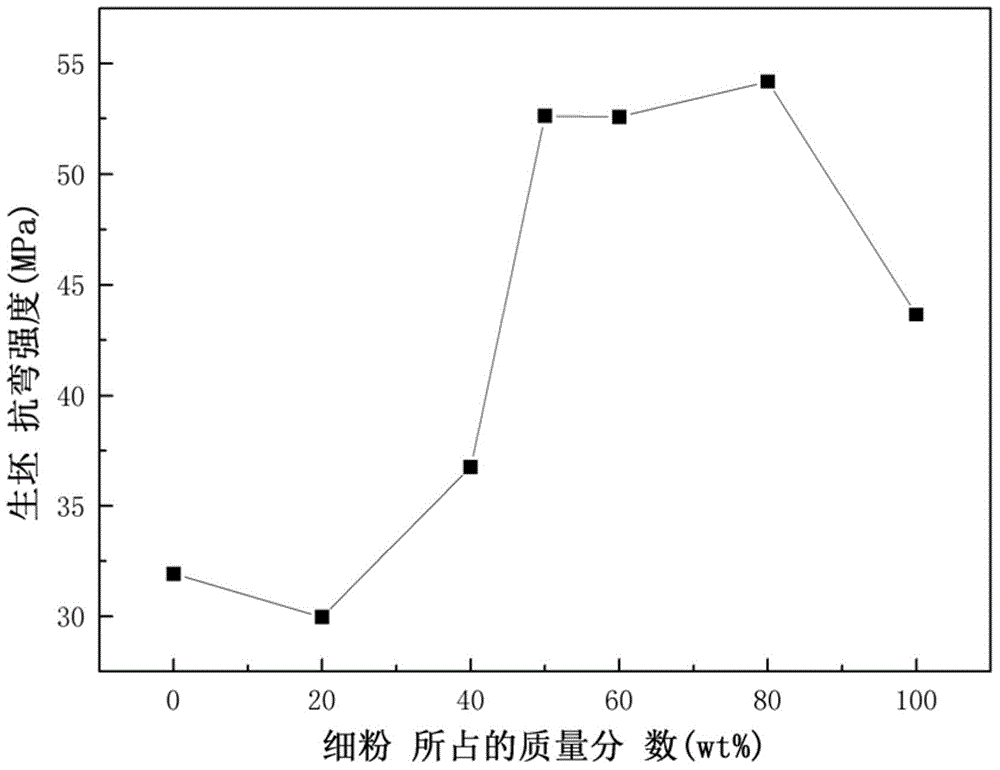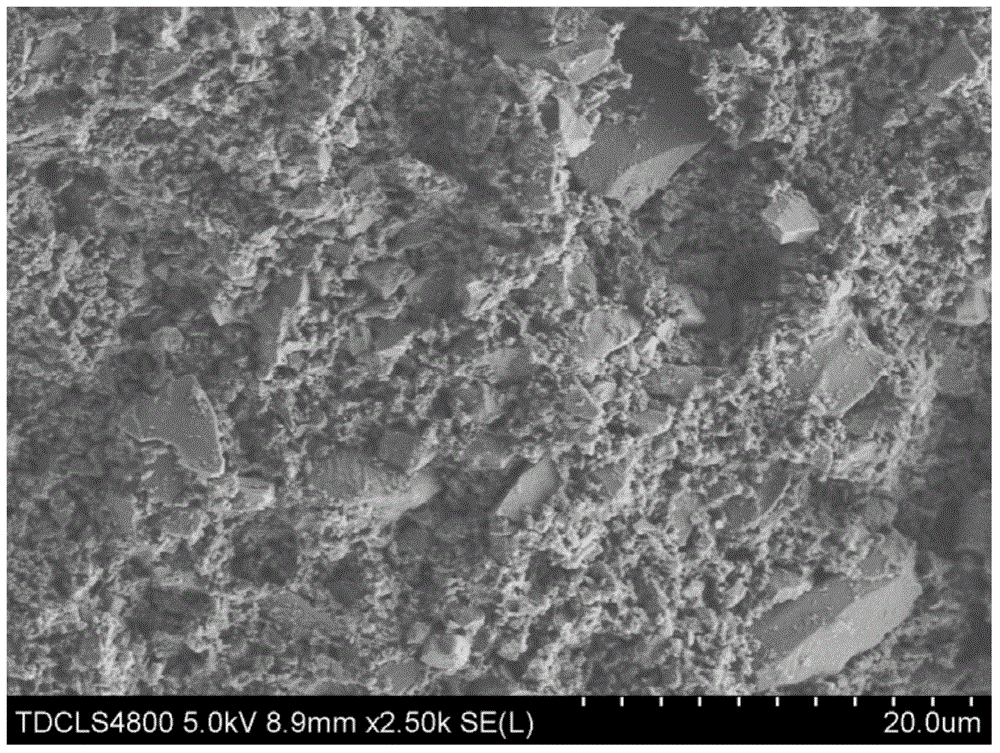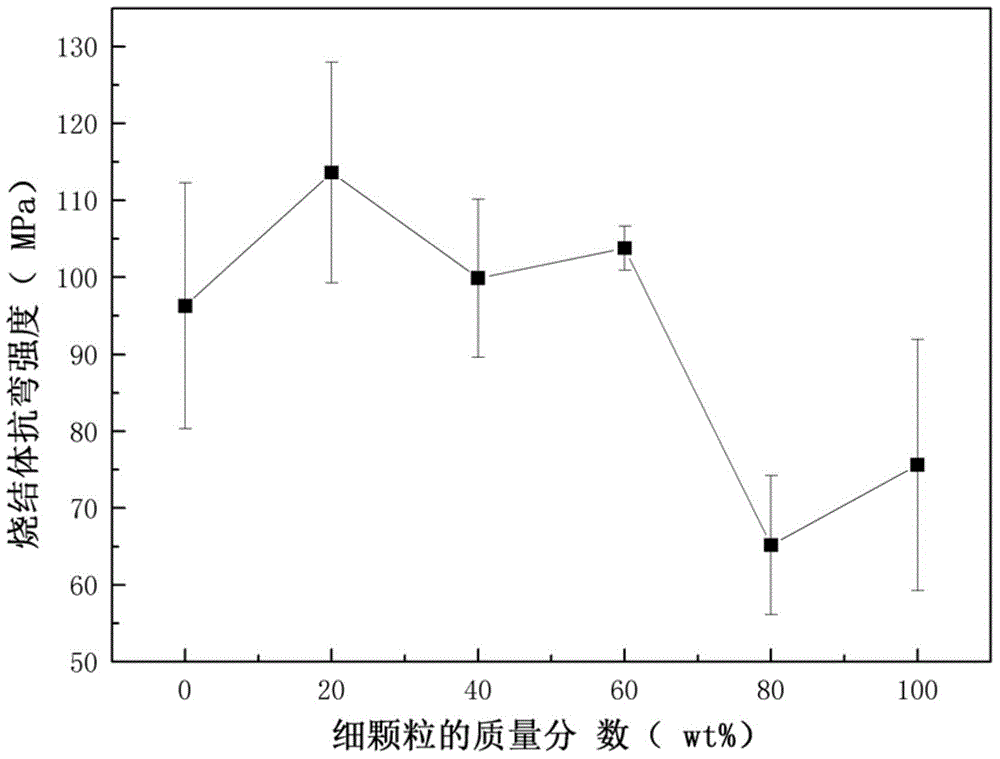Method for preparing zircon refractory material by using particle size distribution combined with gel injection molding process
A technology combining gel and refractory materials is applied in the field of preparing zircon refractory materials by particle grading combined with gel injection molding process, which can solve the problems of increasing process difficulty, large particle size of aggregates and coarse particles, and green body structure. unevenness etc.
- Summary
- Abstract
- Description
- Claims
- Application Information
AI Technical Summary
Problems solved by technology
Method used
Image
Examples
Embodiment 1
[0034] Step 1. Particle gradation of the powder: two kinds of zircon powders with median particle sizes of 1-2 μm and 4-6 μm respectively, and particle size distributions of continuous distribution and bimodal distribution, according to the proportion of the finer powder A proportion of 80wt% of the total mass of the powder is used as a starting material after ball milling, mixing and drying;
[0035] Step 2. Preparation of the premix: by mass, 20 parts of organic monomer acrylamide and 1 part of crosslinking agent N,N'-methylenebisacrylamide were dissolved in 75 parts of deionized water to make a solution, and the solution was Add AN-2000 dispersant to the solution, the amount of dispersant added is 0.6wt% of the total mass of the zircon powder, and then add concentrated ammonia water to the solution to adjust the pH of the solution to 10 to obtain a premixed solution;
[0036] Step 3. Preparation of ceramic slurry: adding the zircon powder obtained in step 1 to the premix pr...
Embodiment 2
[0042] Step 1. Particle gradation of the powder: two kinds of zircon powders with median particle sizes of 1-2 μm and 4-6 μm respectively, and particle size distributions of continuous distribution and bimodal distribution, according to the proportion of the finer powder The ratio of 60wt% of the total mass of the powder is ball milled, mixed and dried as the starting raw material;
[0043] Step 2. Preparation of the premix: by mass, 16 parts of organic monomer acrylamide and 1 part of crosslinking agent N,N'-methylenebisacrylamide were dissolved in 75 parts of deionized water to make a solution, and the solution was Add AN-2000 dispersant to the solution, the amount of dispersant added is 0.3wt% of the total mass of the zircon powder, and then add concentrated ammonia water to the solution to adjust the pH of the solution to 8 to obtain a premixed solution;
[0044] Step 3. Preparation of ceramic slurry: adding the zircon powder obtained in step 1 to the premix prepared in st...
Embodiment 3
[0053] Step 1. Particle gradation of the powder: two kinds of zircon powders with median particle sizes of 1-2 μm and 4-6 μm respectively, and particle size distributions of continuous distribution and bimodal distribution, according to the proportion of the finer powder A proportion of 70wt% of the total mass of the powder is ball milled, mixed and dried as the starting raw material;
[0054] Step 2. Preparation of the premix: by mass, 15 parts of organic monomer acrylamide and 1 part of crosslinking agent N,N'-methylenebisacrylamide were dissolved in 75 parts of deionized water to make a solution, and the solution was Add AN-2000 dispersant to the solution, the amount of dispersant added is 0.2wt% of the total mass of the zircon powder, and then add concentrated ammonia water to the solution to adjust the pH of the solution to 9 to obtain a premixed solution;
[0055] Step 3. Preparation of ceramic slurry: adding the zircon powder obtained in step 1 to the premix prepared in...
PUM
| Property | Measurement | Unit |
|---|---|---|
| flexural strength | aaaaa | aaaaa |
| flexural strength | aaaaa | aaaaa |
Abstract
Description
Claims
Application Information
 Login to View More
Login to View More - R&D
- Intellectual Property
- Life Sciences
- Materials
- Tech Scout
- Unparalleled Data Quality
- Higher Quality Content
- 60% Fewer Hallucinations
Browse by: Latest US Patents, China's latest patents, Technical Efficacy Thesaurus, Application Domain, Technology Topic, Popular Technical Reports.
© 2025 PatSnap. All rights reserved.Legal|Privacy policy|Modern Slavery Act Transparency Statement|Sitemap|About US| Contact US: help@patsnap.com



